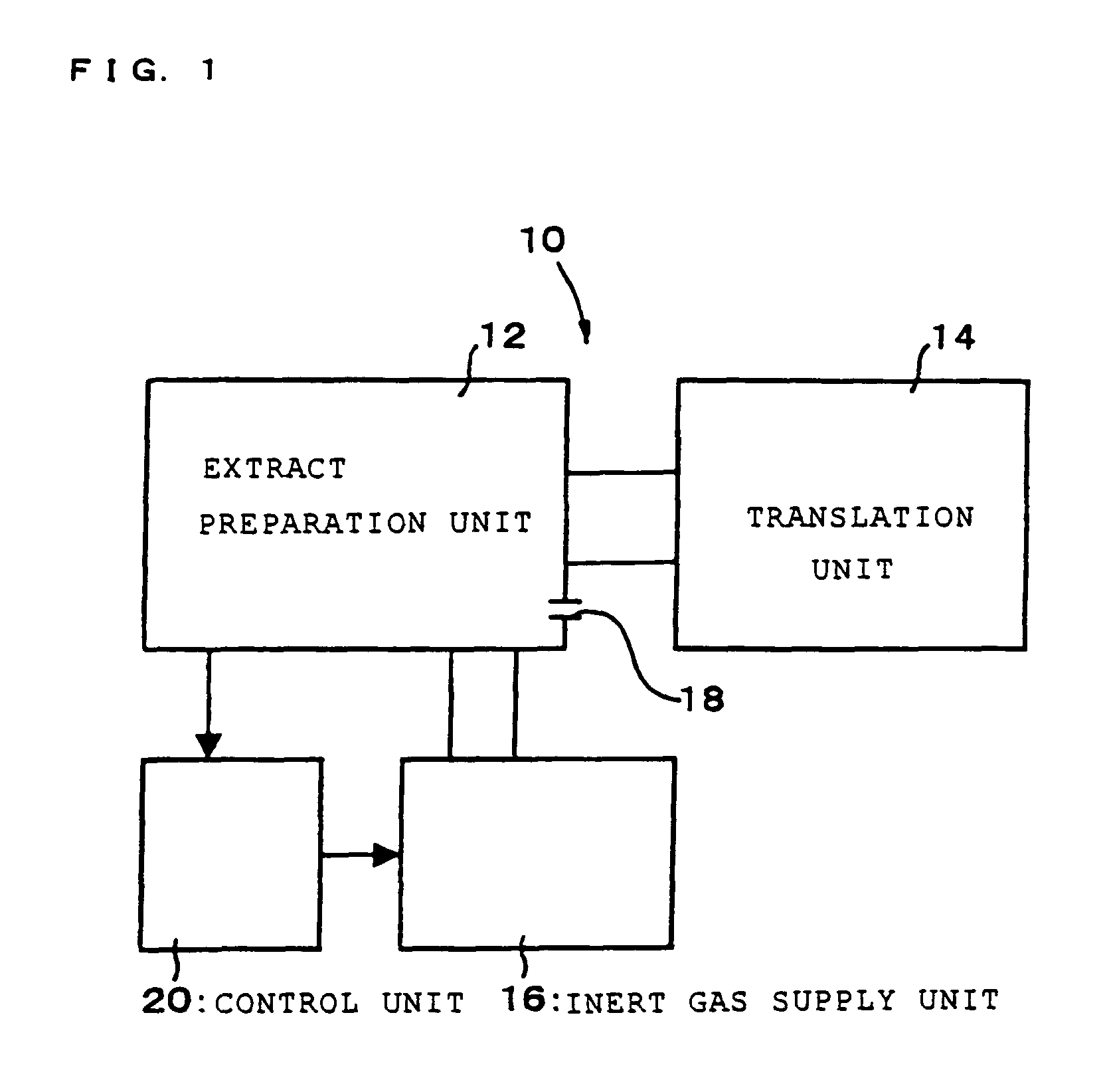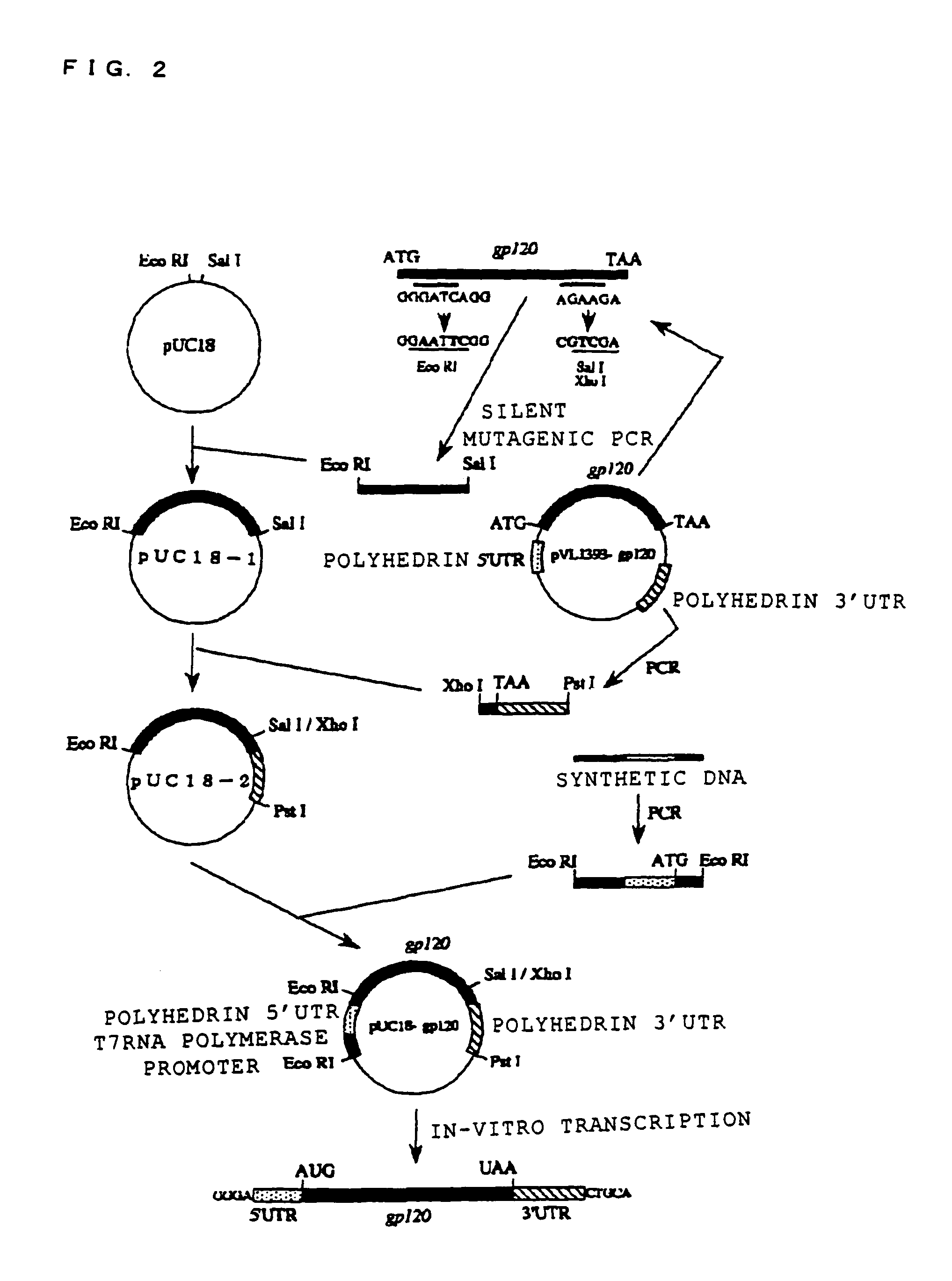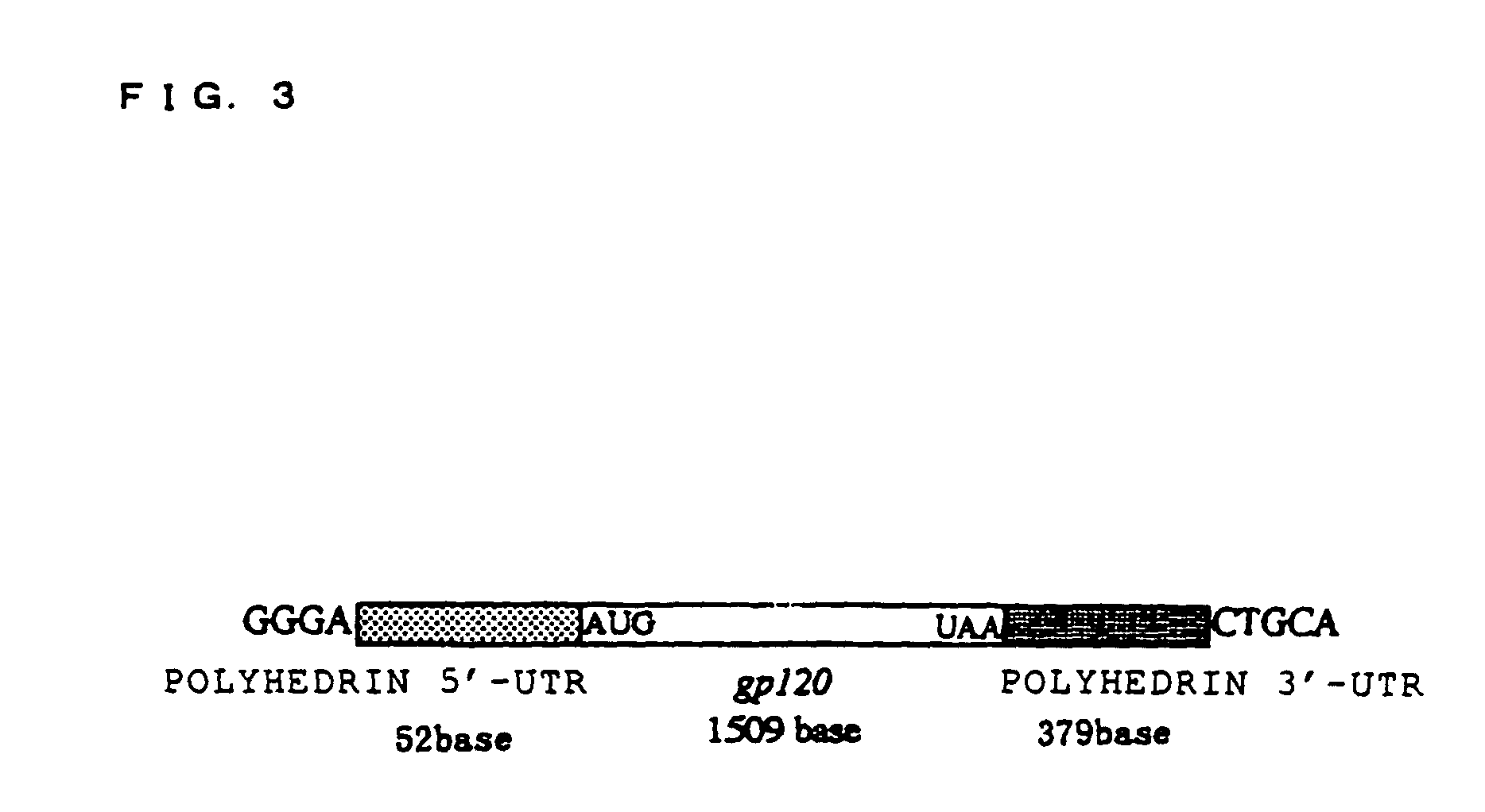Cell-free extract and glycoprotein synthesis system
a cell-free extract and glycoprotein technology, applied in the field of invitro translation system, can solve the problems of deterioration of activity, difficult chemically adding a sugar chain to a protein, and inability to perform post-translational modification of the translated protein
- Summary
- Abstract
- Description
- Claims
- Application Information
AI Technical Summary
Benefits of technology
Problems solved by technology
Method used
Image
Examples
example 1
Preparation of Expression Vector
[0098]HIV (human immunodeficiency virus) GP120 was used as the protein known to be capable of being glycosylated, and the in-vitro synthesis of the glycoprotein thereof was attempted. In order to synthesize this glycoprotein, an expression vector for expressing this gp120mRNA was structured as follows. FIG. 2 shows a frame format of the structuring method of the expression vector, and FIG. 3 shows the structure of the gp120mRNA comprising polyhedrin UTR expressed from this expression vector. Moreover, the base sequence of this polyhedrin 5′-UTR is shown in SEQ ID NO. 1, and the base sequence of 3′-UTR is shown in SEQ ID NO. 2 (Robert, D. et al., Virology 185, 229-241 (1991)).
[0099]In FIG. 2, foremost, point mutation was inserted into the pVL1393-gp120 plasmid with PCR, and the recognition sites of Eco RI and Sal I were formed at both ends of the gp120. The plasmid with the point mutation inserted therein was cut with restriction enzymes of Eco RI and ...
example 2
Examination of Translational Reaction Conditions
[0119](1) Optimization of mRNA Concentration
[0120]The additive amount of mRNA to the cell extract during the translational reaction was examined. 3.125 μg / ml to 400 μg / ml of mRNA was respectively added to the aforementioned Sf cell extract such that the concentration thereof would be sequentially doubled, and the translation performance and glycosylation performance were measured thereby. The results are shown in FIG. 5. In FIG. 5, the circle represents the GP120 without the addition of a sugar chain and the diamond represents the GP120 with the addition of a sugar chain.
[0121]As shown in FIG. 5, the production of GP120 (unglycosylated) in 200 μg / ml was high, and it has been evidenced that the translation performance could be efficiently used. Meanwhile, the glycoprotein showed an approximately stable high value when 50 μg / ml or more.
[0122](2) Influence of Reaction Temperature and Reaction Time
[0123]Temperature conditions at the time o...
example 3
Identification of Translational Product Employing Insect Cell Extract
[0137]The translational product GP120 synthesized by employing the aforementioned cell extract was analyzed with the Western blotting method using an HIV patient antiserum. The results of the analysis are shown in FIG. 14 and FIG. 15.
[0138]As shown in FIG. 14, GP120 was detected at a position corresponding to 90 kDa and 56 kDa on the SDS-PAGE (lane 2 and lane 3). Meanwhile, GR120 expressed pursuant to the Sf21 cells with the baculoviridae insect cells is a glycoprotein and was detected as an extremely strong band at the position of 90 kDa (lane 5 and lane 6). This suggests that glycosylation may have been performed to the translational product synthesized with the SF cell extract.
[0139]Meanwhile, the translational product obtained in the control cell extract prepared from rabbit reticulocyte and wheat germ was detected with a strong band at a position of 56 kDa (lane 4 and lane 6 in FIG. 15), and a band correspondi...
PUM
| Property | Measurement | Unit |
|---|---|---|
| Temperature | aaaaa | aaaaa |
| Temperature | aaaaa | aaaaa |
| Molar density | aaaaa | aaaaa |
Abstract
Description
Claims
Application Information
 Login to View More
Login to View More - R&D
- Intellectual Property
- Life Sciences
- Materials
- Tech Scout
- Unparalleled Data Quality
- Higher Quality Content
- 60% Fewer Hallucinations
Browse by: Latest US Patents, China's latest patents, Technical Efficacy Thesaurus, Application Domain, Technology Topic, Popular Technical Reports.
© 2025 PatSnap. All rights reserved.Legal|Privacy policy|Modern Slavery Act Transparency Statement|Sitemap|About US| Contact US: help@patsnap.com



